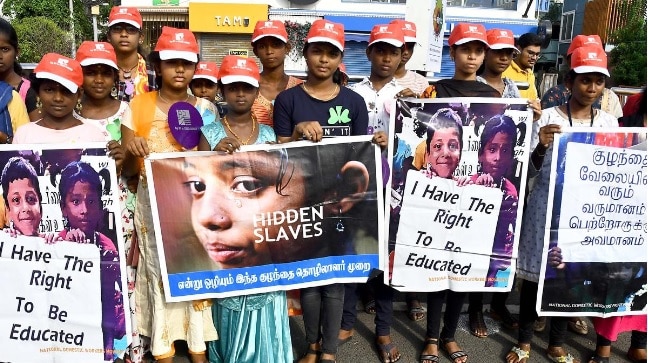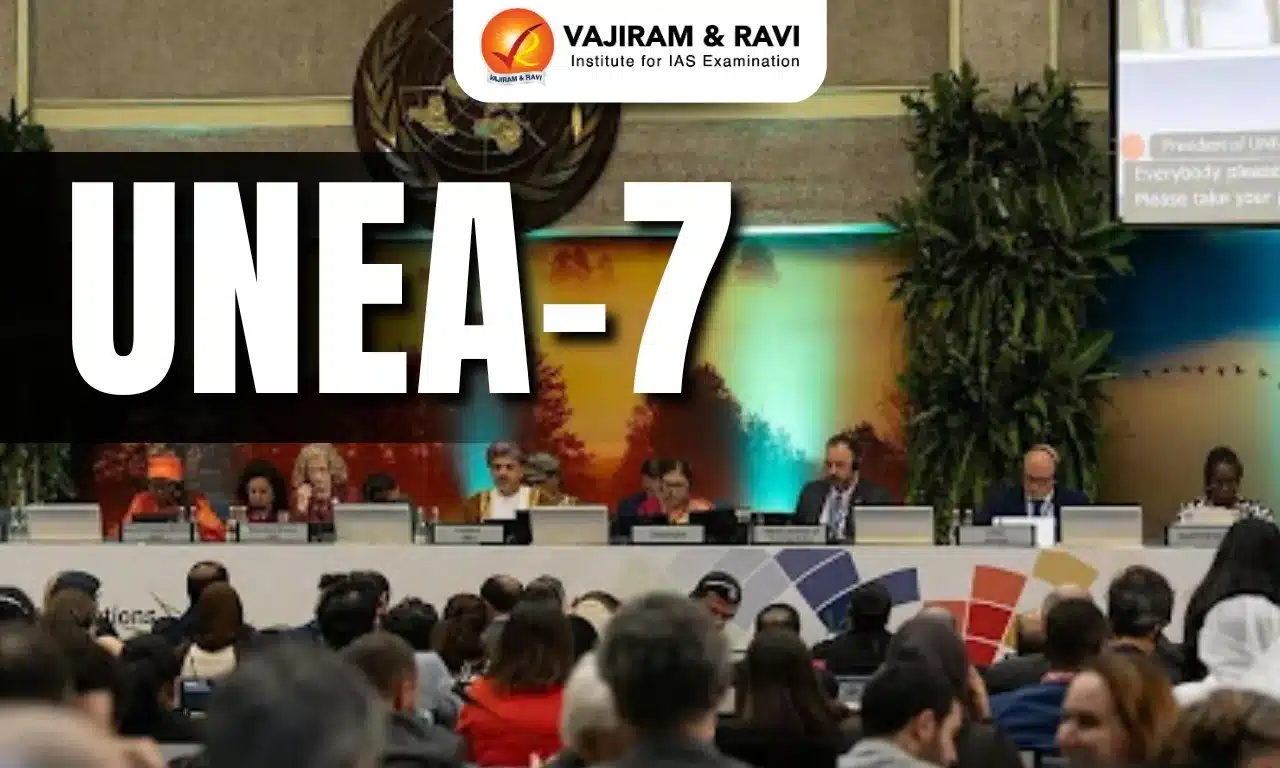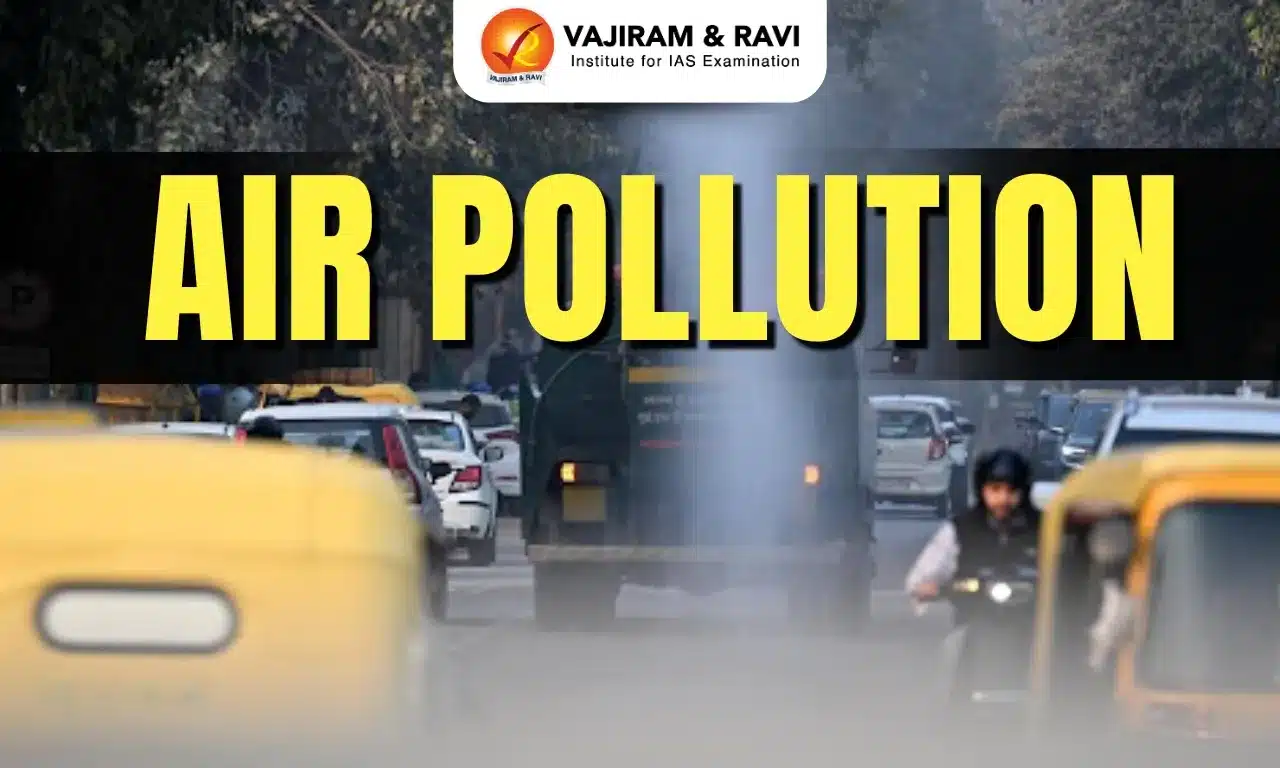What’s in today’s article?
- Why in news?
- Child trafficking in India: Statistics
- Reasons behind child trafficking
- What has India done so far?
- What is Trafficking in Persons (Prevention, Care and Rehabilitation) Bill?
- What are the Challenges in preventing child trafficking?
- Way forward
Why in news?
- Child trafficking manifests in the form of domestic labour, forced child labour across industries, and illegal activities such as begging, organ trade and commercial sex purposes.
- Estimates show that children account for one in every three detected victims of trafficking worldwide; this rises to one in two in low-income countries.
Child trafficking in India: Statistics
- As per data from the National Crime Records Bureau (NCRB), eight children were trafficked every day in India in 2021 — for labour, begging and sexual exploitation.
- These numbers stood at 2,834 cases in 2018; 2,914 in 2019; 2,222 in 2020.
- This data only includes confirmed cases of trafficking, which does not account for missing children.
- Cases often go unreported due to a lack of awareness about the modalities of trafficking, reluctance to seek police help and socio-economic deprivation.
- One child goes missing every eight minutes in India — with millions ending up in domestic slavery, sex work and forced labour.
Reasons behind child trafficking
- Sex trade industry and domestic labour
- Minor girls in the age bracket 15-18 years are more vulnerable to trafficking dur to these reasons.
- Economic factors
- Poverty, hunger, and lack of work are the main reasons for this.
- Social factors
- The caste and community-based discrimination and unfair treatment in rural areas are also at the root of this problem.
- Other factors
- Externalities such as the COVID-19 pandemic, armed conflict, and climate change further increases vulnerability for children.
What has India done so far?
- Status of India
- The 2022 Trafficking in Persons Report released by the U.S. Department of State categorises India as Tier 2 in terms of progress.
- It implies that India “does not fully meet the minimum standards for the elimination of trafficking but is making significant efforts to do so.
- Laws governing anti-trafficking crimes
- India doesn’t have a composite anti-trafficking law that addresses prevention, protection, rehabilitation and compensation of survivors.
- There are, however, separate regulations that address different crimes related to trafficking.
- The Immoral Traffic (Prevention) Act, 1956 (ITPA) is targeted at stopping immoral trafficking and sex work.
- Experts, however, have criticised ITPA for falsely presuming that all trafficking is done for sex work only.
- They say that it criminalises sex workers without providing sufficient legal recourse or scope for rehabilitation.
- The Prohibition of Child Marriage Act, 2006, prohibits and penalises the act of child marriage.
- The Child Labour (Prohibition and Regulation) Act, 1986, prevents children from partaking in certain employments and regulates the conditions of work for children in other fields.
- In 2016, an amendment completely banned the employment of children below 14 years.
- However, adolescents aged 14-18 years are allowed to work in family-related businesses but not in fields that have hazardous working conditions.
- India has pledged to eliminate child labour by 2025.
- The Bonded Labour System (Abolition) Act, 1976, prohibits systems of labour where people, including children, work under conditions of servitude to pay off debt, and also provides a framework for rehabilitating released labourers.
- The Juvenile Justice (Care and Protection of Children) Act 2015, governs laws relating to children alleged and found to be in conflict with law.
- The Transplantation of Human Organs and Tissues Act, 1994, makes commercial dealing in human organs a punishable offence.
- Protection of Children from Sexual Offences (POCSO) Act, 2012, which seeks to prevent commercial sexual exploitation of children.
- The Criminal Law (Amendment) Act, 2013, revised Section 370 of the Indian Penal Code, which deals with buying and selling of any person as a slave, to include the concept of human trafficking.
- Institutional setup
- India set up Anti-Human Trafficking Units (AHTUs) in 2007.
- AHTUs are tasked with:
- addressing the existing gaps in the law enforcement response,
- ensuring a victim-centric approach which ensures the ‘best interest of the victim/ survivor’, and
- developing databases on traffickers.
What is Trafficking in Persons (Prevention, Care and Rehabilitation) Bill?
- The MWCD published the Draft Trafficking in Persons (Prevention, Care and Rehabilitation) Bill in June 2021.
- It has 11 chapters detailing measures to prevent, protect and rehabilitate victims.
- There are specified penalties for offences divided into “trafficking” and “aggravated trafficking”.
- The bill has:
- widened the scope of victims to include transgender persons and others,
- introduced mechanisms for the prevention and rehabilitation of victims (such as providing shelter and food) and
- extended the framework to include cross-border trafficking cases.
- It proposes district- and State-level “anti-trafficking units” with designated police officers and a National Anti-Trafficking Bureau which looks after investigations involving two or more States.
- Investigations are required to be completed within 90 days of the offender’s arrest, and there are appointed sessions courts for speedy trials.
What are the Challenges in preventing child trafficking?
- Prevailing challenges include a lack of coordination among AHTUs and disjointed operations by State and Central Governments.
- There is no comprehensive programme for tackling trafficking, an absent witness protection framework (the victim is also the witness).
- There are challenges in accessing compensation.
- Some States had not created the fund to compensate victims.
- A lack of awareness about compensation and opaque documentation requirements bog down survivors.
Way forward
- There is a need to revisit existing laws, such as the Child Labour (Prohibition and Regulation) 1986 Act, to plug legal holes around the minimum working age.
- Children between the ages of 14 and 18 are also vulnerable to exploitation; in domestic labour.
- There is need to cultivate awareness about different trafficking crimes, form targeted child protection schemes, provide survivors with psychological and emotional support systems during rehabilitation, and offer incentives to keep children in school.
- The antidote to poverty-driven child labour is decent work for adults, so they can support their families and send their children to school, not to work.
Q1) What are Anti-Human Trafficking Units (AHTUs)?
Anti-Human Trafficking Units (AHTUs) are specialized law enforcement units established to combat human trafficking, which is a grave violation of human rights and a serious criminal offense. AHTUs are dedicated teams or task forces composed of trained law enforcement personnel, investigators, prosecutors, and sometimes social workers, who work together to investigate, prevent, and prosecute cases related to human trafficking.
Q2) What is a bonded labour system?
A bonded labor system, also known as debt bondage or debt slavery, refers to a form of labor exploitation where individuals are compelled to work to repay a debt, real or perceived. It is a highly exploitative practice that involves the exploitation of vulnerable individuals who find themselves trapped in a cycle of bonded labor.In a bonded labor system, a person, often from a marginalized or impoverished community, becomes indebted to a creditor or employer. The debt may arise from a loan, advance payment, or other obligations, but the terms of the debt are designed to exploit the individual. The debtor is forced to work for the creditor under conditions of labor exploitation to repay the debt. However, the nature of the debt and the exploitative terms often make it impossible for the debtor to ever repay the debt fully, leading to a cycle of perpetual bondage.
Source: Explained | What has India done to address child trafficking?
Last updated on December, 2025
→ Check out the latest UPSC Syllabus 2026 here.
→ Join Vajiram & Ravi’s Interview Guidance Programme for expert help to crack your final UPSC stage.
→ UPSC Mains Result 2025 is now out.
→ UPSC Notification 2026 is scheduled to be released on January 14, 2026.
→ UPSC Calendar 2026 is released on 15th May, 2025.
→ The UPSC Vacancy 2025 were released 1129, out of which 979 were for UPSC CSE and remaining 150 are for UPSC IFoS.
→ UPSC Prelims 2026 will be conducted on 24th May, 2026 & UPSC Mains 2026 will be conducted on 21st August 2026.
→ The UPSC Selection Process is of 3 stages-Prelims, Mains and Interview.
→ UPSC Result 2024 is released with latest UPSC Marksheet 2024. Check Now!
→ UPSC Prelims Result 2025 is out now for the CSE held on 25 May 2025.
→ UPSC Toppers List 2024 is released now. Shakti Dubey is UPSC AIR 1 2024 Topper.
→ UPSC Prelims Question Paper 2025 and Unofficial Prelims Answer Key 2025 are available now.
→ UPSC Mains Question Paper 2025 is out for Essay, GS 1, 2, 3 & GS 4.
→ UPSC Mains Indian Language Question Paper 2025 is now out.
→ UPSC Mains Optional Question Paper 2025 is now out.
→ Also check Best IAS Coaching in Delhi

















